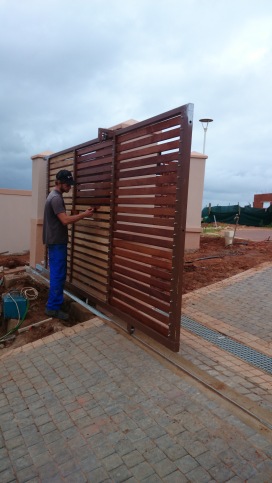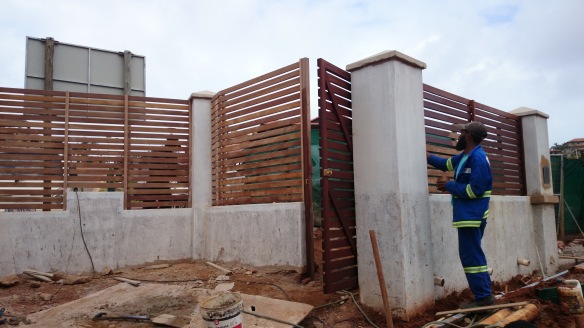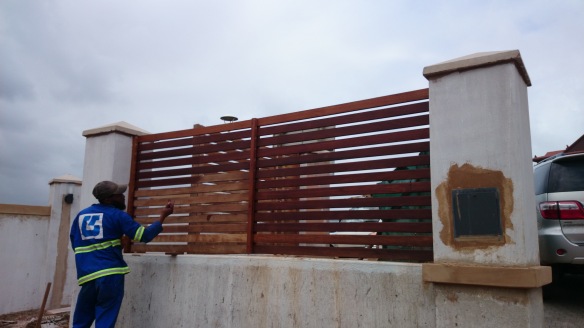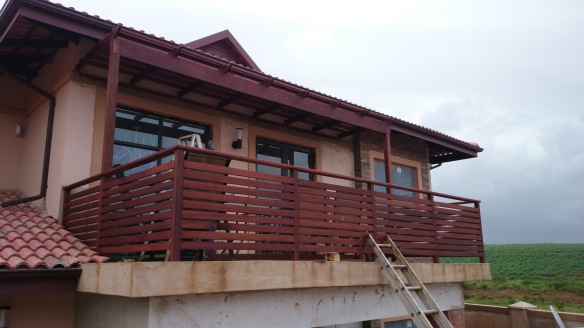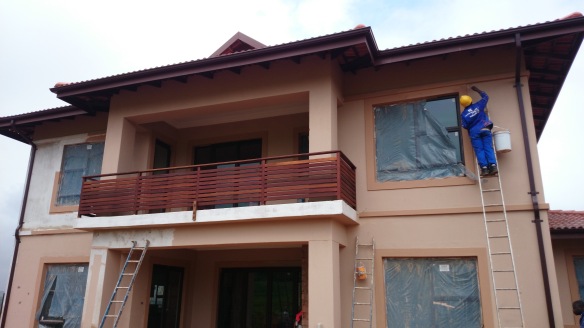I often get asked about using balau as a substructure in a wooden deck. There are various pros and cons of using balau as a substructure in your wooden deck so I thought I would jot it down and in future I can direct clients here who want the ins and outs of using balau as a structure for your wooden deck.
Balau is a very good, hardy and durable wood to use in outdoor wooden decks and other outdoor projects. It contains toxins that limit insects eating it and it is high in resins and oils which naturally repels water and limits rot. All wood will eventually rot. It is just that some will rot quicker as they are less dense and less oily which means they will absorb water more easily, which remains in the wood, causing fungus to grow which breaks down the fibres in the wood and is commonly called rot. This is a simplified explanation but I think it delivers the message accurately. Water doesn’t cause rot. Fungus, as a result of water and sunlight, causes rot.
Balau therefore will rot and I have started documenting some pics of rotten joists that I have come across in my repair work of wooden decks. It may take 15 years for this rot to start but it will happen and when it does repair work can run into thousands if not a complete deck rebuild. Joists are often difficult to access whereas deck boards are not.
On the other hand a piece of wood that has been chemically treated to prevent, or limit rot, will last a lot longer and a pre determined life span can be calculated.
CCA Treatment is a process of pressure treating SA pine. A vacuum is created in a chamber that contains the pine and a solution of copper, chrome and arsenate is introduced which then takes up the void created by the vacuum sucking the solution into the cells. The copper prevents fungus growing which in turn prevents rot, the arsenate keeps the insects away and the chrome binds the two to the wood so that I doesn’t leach out.
Balau is too hard and dense to treat. Pine is a commercially grown timber in South Africa which is inexpensive and very suitable for treatment as it is soft and takes up the solution of CCA successfully. There are various different Hazard Classification or H classifications. Basically H2 is good for indoors (roof trusses etc.) H3 for outdoors exposed to the elements, H4 for in constant contact with wet soil. H5 for submersion in fresh water and H6 for submersion in salt water. A correctly treated piece of pine to H3 will, as per SAWPA guidelines, last in excess of 50 years which is pretty impressive in comparison to a piece of balau that comes with no fixed life expectancy. A poor quality piece of balau may start to fail within 5 years whereas a good quality piece may only start in 15 years. Most of the pics I have documented here are of decks that range in age from 8 years to 15 years. But generally speaking I have found some rot setting in all the decks of 15 years or older.
S5 (SABS Structural grade) Pine is considerably cheaper than balau structural timber. So from an economic point of view it makes sense to use pine in place of other woods wherever possible.
One might now ask why is pine not used on the surface of a deck? Why is balau preferred?
Balau is a very stable wood and therefore expands and contracts less than pine. It is about twice as dense, knot free and doesn’t twist and warp as easily. Pine is soft and with the sun beating on the deck it will tend to crack, twist and warp more easily. To use pine as a deck board one needs to use a 38mm board as opposed to a 19mm board in balau (twice as much wood). Also pine deck boards are normally manufactured from S7 as opposed to S5. S7 refers to the number of knots per square inch (or centimetre) and is therefore a lot more expensive than S5. The cost of pine deck boards is in fact a few rand more per square metre than balau. Hence the reason to use correctly treated CCA pine as a substructure and balau as deck boards. Again pine doesn’t work well in balustrades because twice as much wood needs to be used at S7 grade.
For a free no obligation quote on your sun deck, pool deck, balustrades, pergolas etc., please call us on 082 496 5444 or use the contact us form below.









